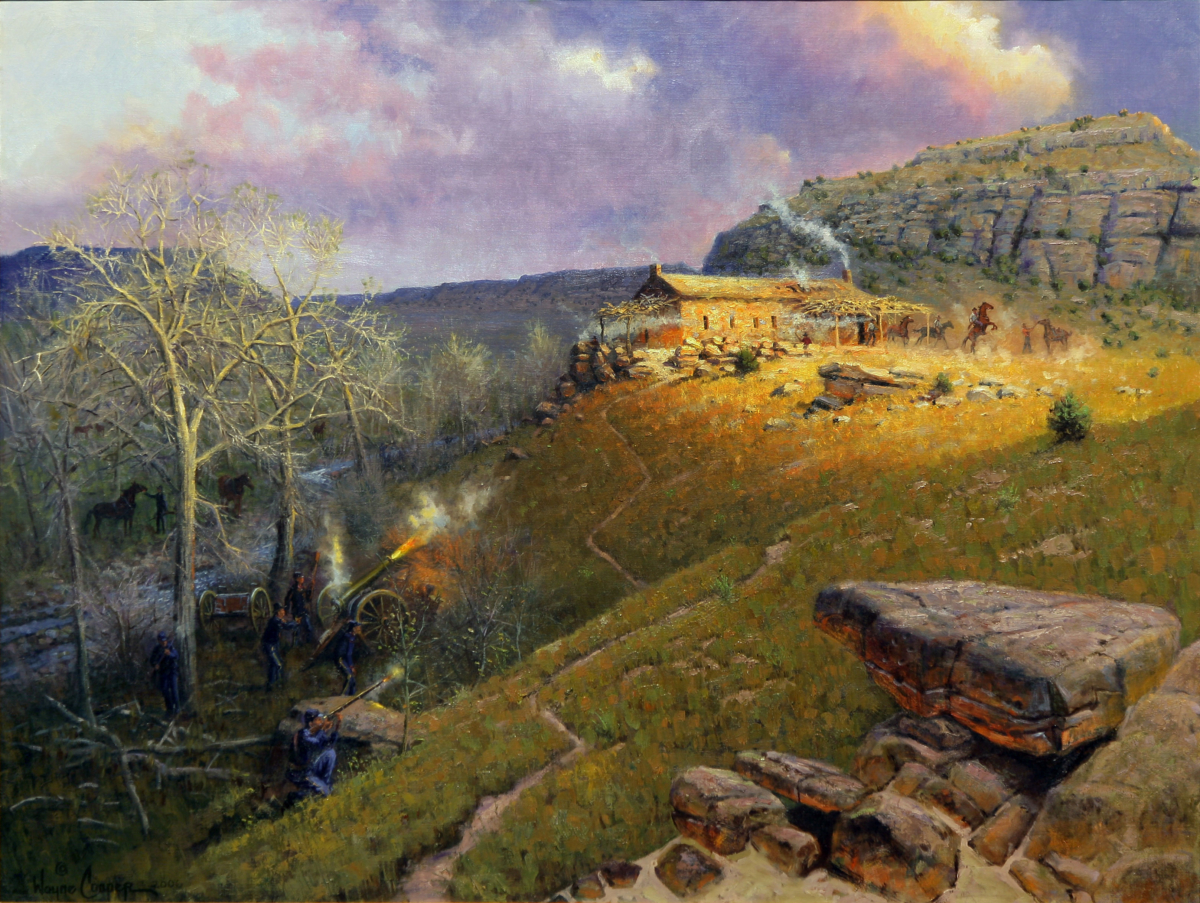by Joe Tarabino
While most popular histories of the region suggest that it was dominated by King Coal, a much more rich history exists dating from the prehistorical Apishapa cultures to modernity. One of the footnotes to these multicultural histories and their multinational perpetrators involves the operations in the late 1860s of an almost comical but also tragic story of a loosely organized activity know as the ‘Rustlers of Robbers’ Roost:’ the Coe Gang.
This Coe should not be confused with the Coe legacy in southern New Mexico founded Frank and Al Coe in the 1870s which still exists to this day, this extension of the Coe name originated nebulously from a man whose name may have been Cyrus L Coe, according to historian Morris Taylor. His origins may have been as ‘the wayward son of a distinguished southern family, who was a confederate captain and deserter,’ a man who served in an Ohio regiment during the Civil War, or a confederate veteran who returned from the war to find his Texas farm in ruins. Regardless, he migrated towards what was then known as ‘no man’s land,’ or ‘neutral strip’ now called the Oklahoma Panhandle.
It is known that ‘Captain’ Coe died on Saturday, April 11, 1868, outside of Pueblo, hung to death with a placard around his neck: ‘Hung by Vigilantes.’ The events leading up to his death which involved at least peripherally General W H Penrose, Sheriff John Kinnear, Dick Wootton and cattleman Charles Goodnight of the Goodnight Loving Trail fame; are as uncertain and legendary as was his origins.
At one time, ‘Stonemason’ Coe presented himself as a man who could assist ‘a man named Barrett’ who had been sent to Fort Lyon and on the Arkansas River and promoted to the rank of sergeant ‘to do a specific job.’
According to Taylor’s telling of the tale, “rumor had it that he had been a detective on the New York City police force or a high government official on some secret mission.” That job was apparently to discover the identity of the individuals who had been rustling cattle from the prime pickings around Fort Union in New Mexico which had been a primary supply and support source along the Santa Fe Trail.
That the Coe Gang worked both sides of the Colorado New Mexico border stealing sheep, killing herders, and seizing cattle and pack mules at their discretion from any available source was known. But the charges against him proffered in Elizabethtown, New Mexico, from which he skipped bail, apparently were not known, and the Coe Gang, numbering up to one hundred men, wasn’t yet a popular moniker. Otherwise Coe might have been recognized as the man the army appointed to find…..himself.
The consequence of the expedition of Coe and Barrett outfitted with two cavalry horses, two pack mules, two Colt forty-five revolvers and one Winchester rifle apiece, plenty of ammunition, money, and rations, resulted in the discovers of Barrett’s body, dead and buried with a rope around his neck in Nine Mile Bottom on the Purgatoire River.
The location of this gang’s operations may have been on Black Mesa near what is currently Kenton, OK or at the base of Turkey Creek Canyon on the Purgatoire. Regardless, it was claimed to have one permanent black woman, ‘the cook and paramour of one of the men,’ but also hosted a well stocked bar, possibly a piano (“open to question,” Taylor comments). It also housed up to ten or so dance hall girls willing to be at the Roost because there, ‘they knew that they would not be subjected to the brutalities and the indignities that were their lot in the saloons of the settlements.’
Skipping out on bail, a couple of escapes from military confinements, acquiring a respectable fortune and a killing or two were all part of the legacy of this man named Coe and his followers.
One of them, on being sentenced to ten years in prison commented, ‘Let it be ten years….I know where my money is and when I get out I will still be young, and will have a sum equal to ten years wages’, suggesting that robbing stagecoaches was all part of their activities.
Of course, all of this is documented and true; except maybe we don’t even know the most basic identity of the man named Coe, the location of Robbers’ Roost or any of the other details.





